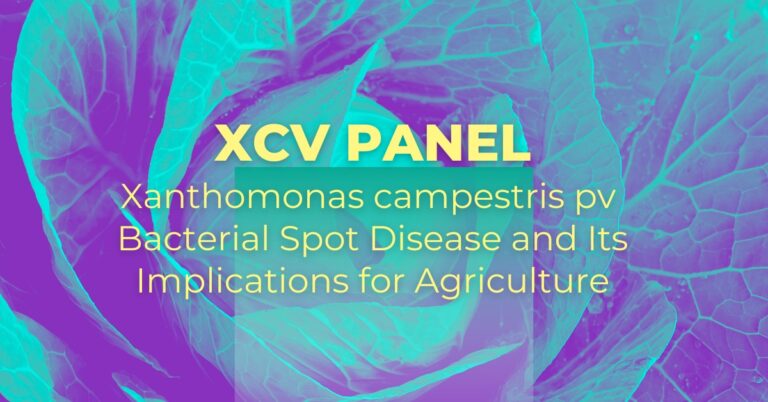XCV Panel – Bacterial spot illness caused by the gram-negative bacterium Xanthomonas campestris pv xcv (Xcc) is a significant concern for agricultural communities globally. The detrimental impact of this plant disease on crops has spurred scientific curiosity and research efforts to comprehend its nature, behaviors, and effective control measures. In this comprehensive exploration, we delve into the origins of Xcc, its pathogenic characteristics, the impact on agricultural yields, and the strategies employed for prevention and treatment.
The Discovery and Evolution of Xanthomonas campestris pv xcv
The history of Xanthomonas campestris pv xcv dates back to the latter half of the 19th century when German phytopathologist Otto Appel first identified and described the bacterium in 1897. Since then, scientific advancements have shed light on its unique biology, pathogenicity, and impact on plant health. Xcc belongs to the genus Xanthomonas and is classified as a separate pathovar due to its specific host range, primarily affecting cruciferous plants and certain fruit crops.
Understanding Xcc’s Pathogenicity and Host Interactions
Xanthomonas campestris pv xcv exhibits a complex interplay of mechanisms that contribute to its pathogenicity. The bacterium typically enters plants through natural openings such as hydathodes, wounds, or leaf pores, where it rapidly multiplies and colonizes plant tissues. This colonization leads to characteristic symptoms such as leaf spots, blights, cankers, and wilting, which vary depending on the host plant species. Xcc’s ability to secrete extracellular enzymes and toxins enhances its pathogenic potential, making it a formidable threat to agricultural productivity.
Impact on Agriculture and Global Food Security
The widespread prevalence of bacterial spot disease caused by Xcc poses significant challenges to agricultural sustainability and food security. Cruciferous plants such as cabbage, cauliflower, and broccoli are particularly susceptible, leading to substantial economic losses for farmers. Additionally, fruit crops like tomatoes and peppers can also be affected, further amplifying the impact on agricultural production and livelihoods.
Strategies for Prevention and Control
Efficient management of Xanthomonas campestris pv xcv requires a multi-faceted approach encompassing preventive measures, biocontrol strategies, and adherence to biosecurity protocols. Crop rotation, utilization of disease-resistant plant varieties, and maintaining field hygiene are crucial in minimizing the spread of the disease. Copper-based sprays and other biocontrol agents can help mitigate bacterial spot infections, although their efficacy may vary depending on environmental factors and bacterial strains.
Exploring Biotechnological Applications and Future Prospects
Recent advancements in biotechnology offer promising avenues for leveraging Xcc’s unique properties for beneficial purposes. Researchers are investigating Xcc’s ability to transport proteins into plant cells, potentially harnessing it as a vector for biotechnological applications. Understanding the underlying biological pathways of Xcc’s pathogenicity is key to developing innovative disease management strategies and unlocking its biotechnological potential.
Conclusion: Towards Sustainable Agriculture and Innovation
XCV Panel – In conclusion, Xanthomonas campestris pv xcv represents a formidable challenge to global agriculture, necessitating concerted efforts in research, prevention, and control. By unraveling the mysteries of bacterial spot disease and leveraging biotechnological innovations, we can pave the way for sustainable agriculture practices and enhanced food security. Collaborative endeavors among scientists, farmers, policymakers, and industry stakeholders are essential in addressing the complex challenges posed by Xcc and safeguarding agricultural livelihoods for future generations.
Also Read: Unveiling the Essence of luv.trise: A Paradigm Shift in Online Dating

